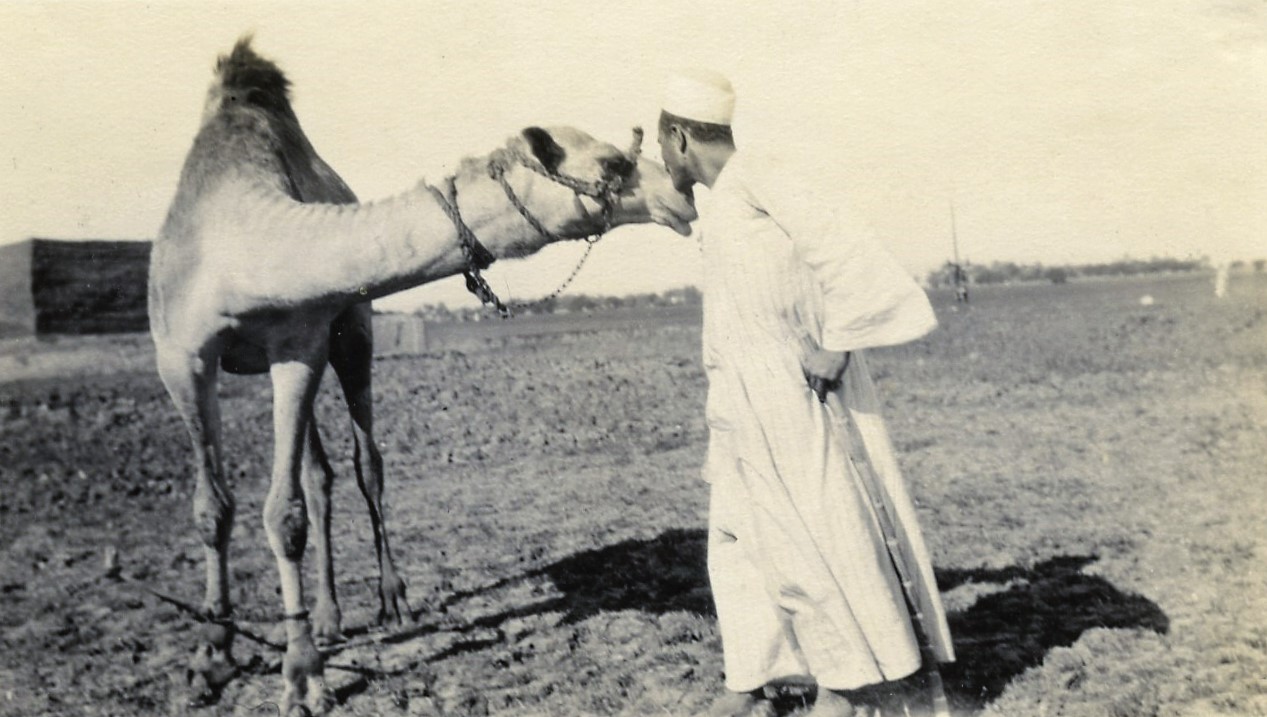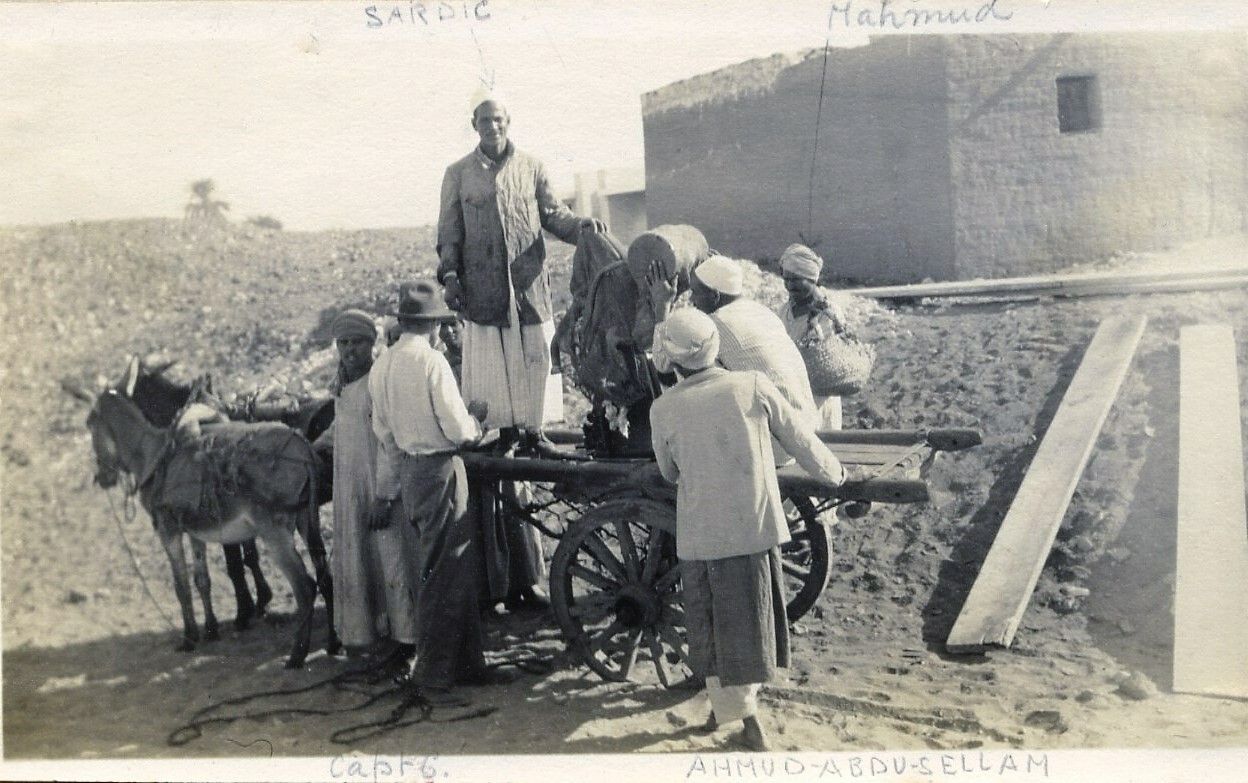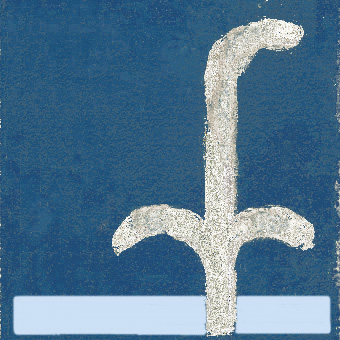
Sardic
Author: Susan Biddle.
This post looks at “Sardic”, the head servant at Abydos, and the extraordinary range of his contributions to the success of the team.
El Sadek Abdallah, known to Myrtle Broome and Amice Calverley as “Sardic”, was the head servant of the team at Abydos. He had first worked for the Egypt Exploration Society team led by Professor Peet at the site before the First World War. By 1929 he was experienced, dependable, highly trusted, and indispensable to the smooth running both of the work in the temple and of the household, to the practicalities of Myrtle and Amice’s various expeditions, and to their security.
He was interested in, and proud of, the team’s work in the Temple of Seti I, and examined the output of all newcomers to the team. He approved of Myrtle’s own work, but that of a fellow team member, C. M. Beazley, “troubled him exceedingly”, and he once said to Myrtle that “the Kawargeh (gentleman) does not understand the custom of the work here”. Sardic’s contribution to the work ranged from the mundane – carrying Myrtle’s drawing board and materials, and sharpening pencils – to the skilled. When the water pump was being repaired while Amice was taking photographs of the temple reliefs, Sardic was the only person who could be relied upon to get the correct washers for the pump, and also the only person with enough knowledge of the work to give directions to position the mirrors and reflectors as required for Amice’s photographs. When the Italian King visited the temple in March 1932, Sardic worked the mirrors to reflect the sunlight into the underground Osireion. It was Sardic who was trusted with the key to the box with the completed drawings.
He dealt with the maintenance of the dig house, mending windows after a sandstorm, fixing brackets to an unsteady table, inspecting the house for white ant damage, and fixing new netting around the veranda. He was not too proud for hands-on involvement: when the old stable was repaired and white-washed for use as a garage, Myrtle observed that “you cannot imagine anything more rakish than Sardic with a white splash over one eye and another on his nose”. He also did the weekly shopping for the team, and bought – and killed – the animals for the various feasts. Sardic loved Amice’s car “Joey”, and was responsible for its basic maintenance. In later seasons, Amice and Myrtle taught him to drive.

Myrtle Broome, Bushey Museum and Art Gallery:
https://artuk.org/discover/artworks/amice-calverly-sitting-writing-or-sketching-with-joey-their-expedition-car-and-their-egyptian-servant-15908/search/keyword:myrtle-broome/page/3
Apparently something of a dandy, Sardic celebrated his recovery from flu in December 1929 by reappearing in a “daffodil yellow satin gallibea with maroon stripes”. For the feast at the end of Ramadan in 1931, he had a “wonderful costume” made for the occasion: a new blue and white striped guftān (kaftan) in stiff cotton-backed satin, with deep bell sleeves and edges bound in braid. He dressed up in a clean white turban and galabiya for a trip to Nag Hammadi to see King Fouad open the new dam. His usual footwear was a pair of cheerful orange-dyed goatskin slippers – Myrtle had a similar pair made for her father, hoping they would make him comfortable house shoes and be stout enough for garden wear too.
Myrtle thought Sardic, a Bedouin Arab, loved camels more than his own children. When they encountered a young female camel tethered in the cultivation who greeted them with “wonderful burbling noises like a big cauldron bubbling over”, Sardic explained she did this because she was happy and “made burbling noises too, & went & kissed her on the nose”.

Photograph by Myrtle Broome (1929)
Bushey Museum & Art Gallery
He was nonetheless very proud of his wife and children, who lived on a small farm about ¾ of a mile from the dighouse, though Sardic himself preferred to sleep in the camp. Amice and Myrtle visited his house quite often, admiring the animals which included goats, sheep, geese, chickens, pigeons, a cow, a gamoose (buffalo), donkeys, and dogs.
Myrtle was very interested in the work of the local weavers, and Sardic took her to meet both wool and silk weavers, and bought her a spindle. She told her parents that “Sardic’s tribe has worked with wool for many generations, he spins as naturally as a fish swims”. As well as sending samples of Egyptian wool back to England, she had English wool sent out to Egypt for Sardic, who wanted to make himself a vest to go under his galabiya. Sardic also made Myrtle a scarf using English wool, which she often wore for warmth in the temple, though he was distressed that the English wool dried up in the Egyptian heat so he could not spin it as finely as he wished.
Sardic was trusted to cope when things did not go to plan. When the electricity generator had to be repaired in Nag Hammadi, it was Sardic who was sent to retrieve it, and who had to organise an overnight guard when the boat bringing it back down the Nile ran aground on a sandbank.

Photograph by Myrtle Broome (1930)
Bushey Museum & Art Gallery
It was Sardic who accompanied the cook to the Assiut hospital for treatment to repair the botched dentistry of the local barber in 1930. More seriously, when Myrtle’s fellow worker Otto Daum broke his leg very badly in December 1935, he was the one who took charge of Otto’s care during the overnight train journey to Cairo for hospital treatment.
He entered into the European celebration of Christmas, buying “about 20 lb of the most lurid horrors” for the bags of sweets they gave the children at Christmas, saying these “will delight the hearts of all the children”. Myrtle did not doubt this, but also foresaw “many future demands for Eppy [Epsom Salts], or Castor Oil”. For Christmas 1934, Sardic made a Christmas card for the team wishing them “A happy feast, a long life & may your honours be prosperous all the year”. One year he entertained them with his first encounter with English Christmas customs: Professor Peet had set the Christmas pudding alight with brandy “& called Sardic to come quickly because the pudding was on fire. Sardic came & saw it flaming & seized the water jug to pour over it”. He was a very competent master of ceremonies of the fantasia with which the servants entertained the team and the local villagers at Christmas, as well as taking part himself.
Sardic was seldom, if ever, without his gun – and used it on two occasions to shoot mad dogs which they encountered. He was alert to other dangers too: on one of her day trips into the desert, while Myrtle searched for footholds to climb to the top of a wadi, Sardic observed tracks on the floor of the cave and warned her “it would be best to go back now, for this is the house of a very big fierce snake”. His gun came in useful on other occasions too: at the end of one day trip, he asked permission to do something “for a woman whose stomach wouldn’t work” – “the next moment there was a terrific bang, that set all the dogs barking & caused a great commotion, he’d fired his gun in the air” to shock a woman who had been in labour since the previous day into giving birth. He claimed the credit for himself when she gave birth to a son later that day, telling Myrtle that “the bang frightened the child so much that it at once walked out of her stomach”.
A practising Muslim, he was pleased when Myrtle remembered he needed time off on Friday to pray. It was his great ambition to go to Mecca, and when accompanying Amice and Myrtle on their trip to the Red Sea in March 1936, “he gazed longingly at the Mountains of Sinai that were visible on the other side”.
He was always next to Myrtle and Amice on all their excursions – to the village, to friends in the local towns, and on their longer treks for which he organised the camels they rode. He was “willing & eager to take all the risks” alongside Myrtle and Amice, and had “a firm belief that the English ladies could do anything they attempted”. He found shady orange groves for Myrtle’s picnic lunches, advised on the locations for their camps, brought and heated water for Myrtle to wash, boiled Myrtle’s drinking water, made the tea, and purchased and boiled the fish for supper.
His wages were paid monthly to the Egyptian Government via the mudir (local governor) of Girga. During the summers, Sardic guarded the dig house and it was he who was left in charge when work stopped in 1937. At Amice’s instigation, his long service was recognised by the Egypt Exploration Society in 1940 when he was given a watch inscribed in Arabic “In recognition of long and faithful service”.
Sources: letters 33, 36, 39, 41, 47, 48, 49, 53, 54, 51B, 55B, 57, 58, 64, 69, 97, 98, 100, 102, 105, 106, 120, 121, 122, 125, 126, 188, 189, 200, 201, 219, 239, 249, 252, 255, 258, 263, 284, 285, 306. 309, 328, 329, 358, 359, 364, 370, 372, 375, 376, 398, 412.
With thanks to:
- the Griffith Institute, for the opportunity to work on Myrtle’s letters and their ongoing support for this blog
- the Egypt Exploration Society, for information about the finances and the presentation watch for Sardic
- the Bushey Museum and Art Gallery, for copies of photographs from their Myrtle Broome Collection
- the Artefacts of Excavation project, for biographical details for Eric Peet
- the Digital Giza project, for biographical details for Otto Daum



